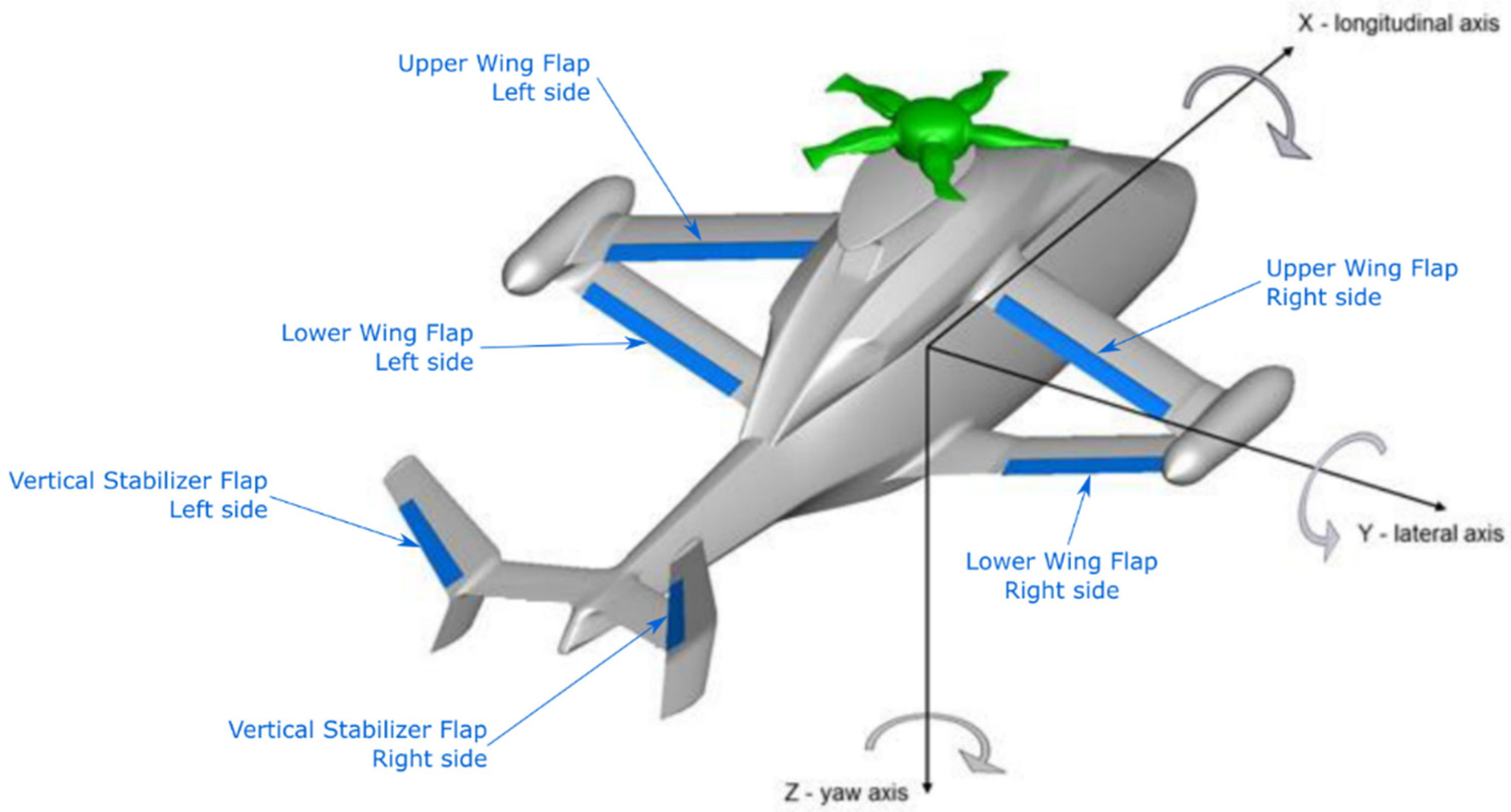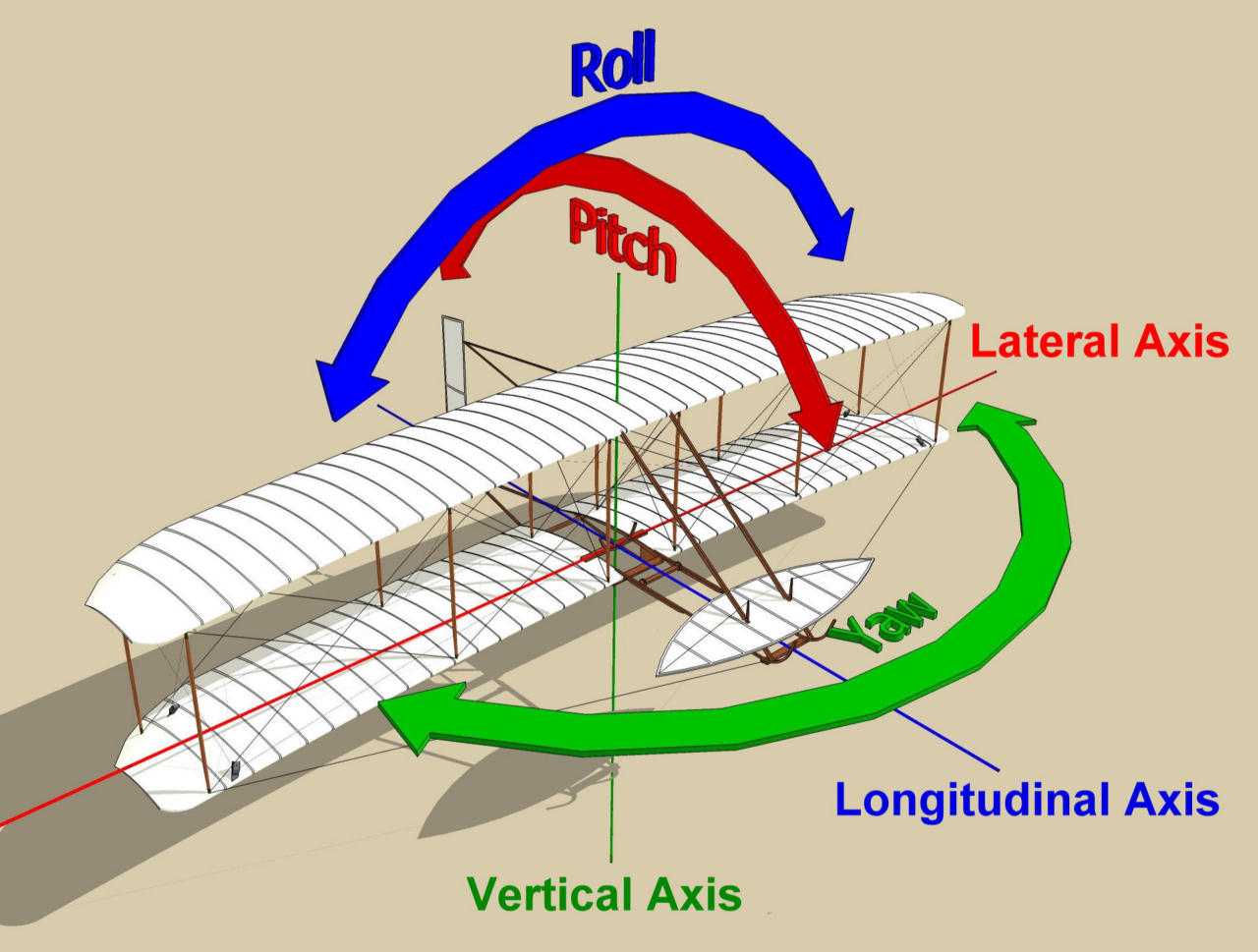Aircraft Yaw - This article discusses yaw, pitch and roll as the axes of aircraft symmetry. For the context in mechanics, see Moment of inertia § Principal axes. For Euler angles with similar names, see Euler angles § Tait–Bryan angles.
An airplane in flight has the freedom to turn in three dimensions: yaw, the nose is left or right in relation to the vertical axis; rise, nose up or down about the axis from wing to wing; and spinning, spinning around an ax that goes from the nose to the tail. The axes are alternatively designated as vertical, lateral (or horizontal) and longitudinal respectively. These axles travel with the vehicle and rotate to Earth along with the craft. These specifications were similarly applied to spacecraft where the first manned spacecraft were developed in the late 1950s.
Aircraft Yaw

These rotations are produced by a torque (or torque) on the main axes. In aircraft, these are produced internationally with movable control surfaces, which change the distribution of the aerodynamic force of the net on the vehicle's center of gravity. Elevators (flaps that move horizontally on the tail) produce pitch, rudders on the vertical tail produce yaw, and ailerons (wings that move in opposite directions) produce roll. In an airplane, movements are usually generated by a reaction control system consisting of small rockets used to activate an asymmetrical thrust vehicle.
What Is Adverse Yaw And How Does It Works
These axes are usually represented by the letters X, Y, and Z to compare them to some reference frame, usually called x, y, z. Usually, this is done by using X for the longitudinal axis, but there are other ways to do this.
The yaw axis originates from the center of gravity and is directed toward the bottom of the aircraft, relative to the wings and fuselage reference line. Movement about this axis is called yaw. Positive movement moves the nose of the aircraft to the right.
The term yaw was originally used for steering a ship and referred to the unsteady motion of a ship turning from its stand. Its etymology is uncertain.
) originates in the plane of gravity and is directed to the right, parallel to a line drawn from wing tip to wing tip. Movement on this axis is called pitch. The right movement raises the nose of the aircraft and lowers the tail. The elevators are the main volume control.
Aircraft And Engine Response Using Yaw Rate Feedback To A Turn Command...
) is from the center of gravity and is directed forward, parallel to the fuselage reference line. Movement about this axis is called roll. Angular movement around this axis is called bank.
A positive movement raises the left wing and lowers the right wing. A pilot spins by increasing lift on one side and decreasing it on the other. This changes the location of the bank. The ailerons are the main control of the bank. The rudder also has a secondary effect on the bank.
These axes are related to the principal axes of inertia, but not the same. They are the axes of geometric symmetry, regardless of the plane mass distribution.

In airplane and aircraft engines, the rotations of these axes are often called Euler angles, but this contradicts the usage elsewhere. The number behind them is similar to the Fret-Serret formulas. Doing a transformation in the natural reference frame is equivalent to multiplying its matrix on the right (the matrix with the reference frame vectors as columns) by the rotation matrix. Have you ever wondered why your plane starts turning left? when you try to turn right? When you turn the plane left or right, your ailerons have a major disadvantage: they cause bad yaws. So what is it? Here's what you need to know…
Are You Unstable?
Negative yaw is the tendency of the aircraft to turn in the direction opposite to the direction in which it is turning. For example, when your plane rolls to the right, it may initially roll to the left.
When you turn the airplane to the right, the right aileron goes up and the left aileron goes down. Aileron up (right aileron in this example) creates less lift and less drag than when aileron is down. A lowered aileron (the left aileron in this example) produces more drag and lift, initially spinning the airplane to the opposite side of your roll.
But why does lowering the aileron increase drag? As with flaps, when you lower the aileron, you change the line of the wing, creating a higher angle of attack (AOA). As AOA and lift increase, the maximum drag increases, because the drag of the aileron is reduced to drag.
At the same time, bad feet are corrected by using the curtain (in almost all cases, by stepping on the rudder in a turn). When you engage the rudder arm, you create a side force on the vertical tail that opposes the negative yaw. By adding a rudder, you create a stop moment that helps turn the plane into the right direction and keep it aligned.
Aircraft Primary Flight Controls
Remember to check the sliding label on your device's panel to make sure you're making the right adjustment to prevent nasty rashes.
The rudder does not balance the drag by causing it to drag more than the wing. Instead, the rudder creates lift (like a wing) to put the nose directly into the air and prevent the aileron from pulling down.
To combat the effects of negative yaw, you will find different aileron designs on GA aircraft. Two of the most popular designs are:

1) Differential ailerons: One aileron is raised farther than the other aileron is lowered. The increased aileron movement produces a greater change than the increase in AOA at lower aileron. This causes an increase in suction, which reduces swelling.
How Do Yaw Dampers Work?
2) Frieze Ailerons: The lifting aileron rotates with an offset hinge. The front of the hood now pushes into the air, creating drag and reducing negative yaws. In this case, the frieze ailerons use a drag structure to prevent drag.
Some airplanes have worse winds than others, and in general, the slower the airplane, the more ailerons are needed to bank the airplane. In general, you can expect to find more negative tendencies on slow-flying aircraft.
What is your plane's resistance? Next time you fly, make a left and right turn, and see how many scissors you need to add to keep them connected. Once you know how much wire you need on both sides, it will be easier to anticipate and respond to your aircraft's inclinations.
Colin is a co-founder of a lifelong airline. He has been a flight instructor at the University of North Dakota, a CRJ-200 pilot, and has led the development of numerous commercial and military training systems. You can contact him at colin@. This story was created in partnership with Republic Airways. Check out the full series here. Are you ready to apply for a flight status? Submit your request here.
D Render Of Possible Aircraft Rotation Axis. Image Isolated On White Stock Photo
You can think of the yaw damper as independent feet on the rudder pedals. "The yaw damper is a servo that moves the rudder based on input from a gyroscope or accelerometer that senses the yaw rate" (FAA AFH 12-7). Pilots with yaw dampers can often roll in and out with their feet flat on the ground, while the skid/skid ball is centered.
A series of accelerometers or speed sensors (gyros) on the tail constantly communicate with yaw patterns and the rudder servo system to provide accurate information. The rudder adjusts perfectly in any direction to keep the plane moving smoothly and smoothly.
Simply put, when the yaw damper is engaged, take your feet off the rudder pedals. The yaw servo does all the work, keeping you in a coordinated plane.

A dutch roll is a series of turns in which the aircraft rotates to one side and turns to the other. In a typical winged aircraft, the yaw stability is not as strong as the yaw-induced roll stability. As the tail is trying to move the nose, the aircraft flies up to the left, causing a left bank. The sweep now begins to lift the left wing, causing the 737 to slide to the right. Dragging to the left starts to drag the nose to the left.
Shock And Yaw
Most modern sweepers are equipped with yaw dampers that automatically correct Dutch roll by quickly adjusting the rudder. If your damper isn't working, stopping the roll can be even more difficult. Most modern swept-wing airplanes will come out of the Dutch roll if you stop adding control gear. However, some of the older aircraft, such as the 727, can be difficult to recover.
In some newer piston airplanes with autopilots, such as the Cirrus SR22, the yaw damper automatically turns on at 200 feet from the ground during climb and turns off 200 feet from the ground before landing.
The system works whether the autopilot is engaged or not, but you can turn the yaw damper off at any time.
Yaw boateng, yaw aircraft, yaw vr, yaw simulator, yaw sensor, yaw, yaw occurs about which aircraft axis, yaw motor, yaw arm, david yaw, gimbal yaw, aircraft roll pitch yaw
0 Comments